The Outward Overland Trailer
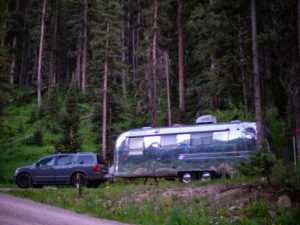
5 years ago, I purchased and restored a 1968 Airstream Overlander Travel Trailer. It was a LOT of work, but the finished product provided my family and I with a pretty killer medium for adventure. We took some great trips in that Airstream and made some memories that we will all never forget. And, at least for me, the process of rebuilding the trailer from the ground up was fun and super educational about how RV systems worked.
We originally purchased the airstream with the idea that it would contain all of the gear necessary for a multi-day trip and that we could hook it up and go anywhere on a whim. After the trailer was ready for use, we quickly learned that our dream of it being the perfect camping vehicle was far off base. First of all, it was huge. Towing a 26ft trailer that weighs 6,000lbs isn’t something you do mindlessly. Ensuring that you’re properly connected, all safety devices are in place and working correctly, and that the trailer is ready for travel takes time – usually over an hour – to feel confident that people and property are safe for the road. Secondly, large travel trailers are not the most maneuverable vehicles, so proper planning had to be done far ahead of time to know that your destination could handle the size. Finally, the trailer had a lot of great electrical systems on board – it was clearly meant to have power while being outdoors. Locating sites that had available power took time and limited the locations to choose from.
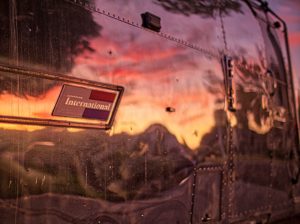
The strongest feeling we had after a few years with the airstream was anticipated. We missed being outdoors. We would tow our shiny encapsulated tiny home for hours into the outdoors, only to feel as though we weren’t really in the outdoors. For some, this is the point. Having (almost) every luxury that home provides should make camping more comfortable. But for us, we missed being more immersed in the elements. We missed the sound of rain on the taut sides of tent. We preferred cooking outdoors without worry of smoke filling the cabin of the airstream. We wanted more living space than our airplane on wheels allowed.
So, a few years ago, we sold our airstream and started over. We purchased a large and long-lasting canvas tent. We picked up a 3-burner outdoor propane stove. We bought a few canopies to give us various spaces protected from the rain – a screened bug tent and a 10×10 popup canopy. We even splurged on a queen-sized air mattress with a frame that’s raised off the ground. With all our new gear, we were going to do camping right – at least by our standards.
Our new challenge quickly became apparent. With all of this gear, how would we get it to the destination? And how would we store it all in our already cluttered garage?
After some googling, I discovered the world of overlanding – vehicles (usually off-road ready) with camping setups that could be deployed far off the beaten path. Having loved the free dispersed camping spots we had found with the airstream, I instantly connected with the idea of overlanding. So I started searching for ideas on how to build my own overland trailer. After watching hours of YouTube videos of DIY overland builds, I was growing excited about the challenge of building my own, but was hesitant to spend the time it would take during the build process. And summer was coming!
Then one day, I stumbled across a post on Offerup for a trailer that I thought could work well as a starting point for an overland trailer build. The trailer was being used by a mobile auto-detailing business and I thought it was the perfect platform for what I had in mind. So I bought it and brought it home.
The Outward Overland Trailer
The trailer I purchased was a lifted flat-bed trailer that had a 1966 Utility Body Company work truck bed mounted to it. Giving it 3 lockable compartments on either side of the trailer provided multiple blank canvases to build out the necessary systems. On top of the 6 side compartments, a large front lockable compartment had been built along the front of the trailer and a 4′ x 1′ toolbox had been installed on the trailer tongue. In all, the trailer came with 8 lockable compartments and had an open-air “truck bed” in the middle with a double-door tailgate at the back. To top it all off, the entire trailer was painted in a grey digital camo scheme that added some great character.
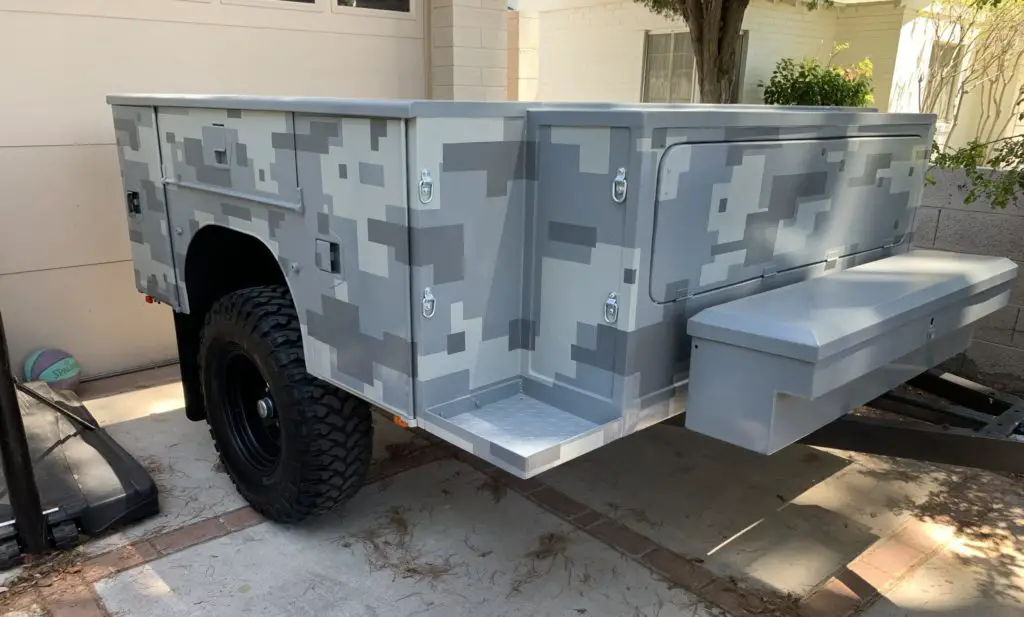
Over the past year, we have added a series of systems and components to make this trailer our basecamp when exploring the wild. It’s not perfect and it’ll never be “done”, but it’s a constantly evolving hub that allows us to contain all of our needs when away from home in smart and creative ways. It also can go further off the pavement and deeper in the sticks than most camping vehicles. Below are the various systems and upgrades we’ve added to the trailer.
Electrical System
Our overland trailer has two 6-volt “golf cart” batteries wired in series for 210 amp hours of 12-volt power. For charging, it has a 120V 10amp battery charger when we have access to the grid and a 20amp MPPT solar charger with 180 watts of solar panels for when we don’t. We’ve installed a 1000watt pure sine wave inverter for the rare times we need 120v power on the go. It also has a battery monitor to know exactly where our battery capacity (as well as input and output) is at any given time. The battery system is finished off with a switch panel with circuit breakers for the various systems that also includes usb and 12V DC “cigarette lighter” ports.
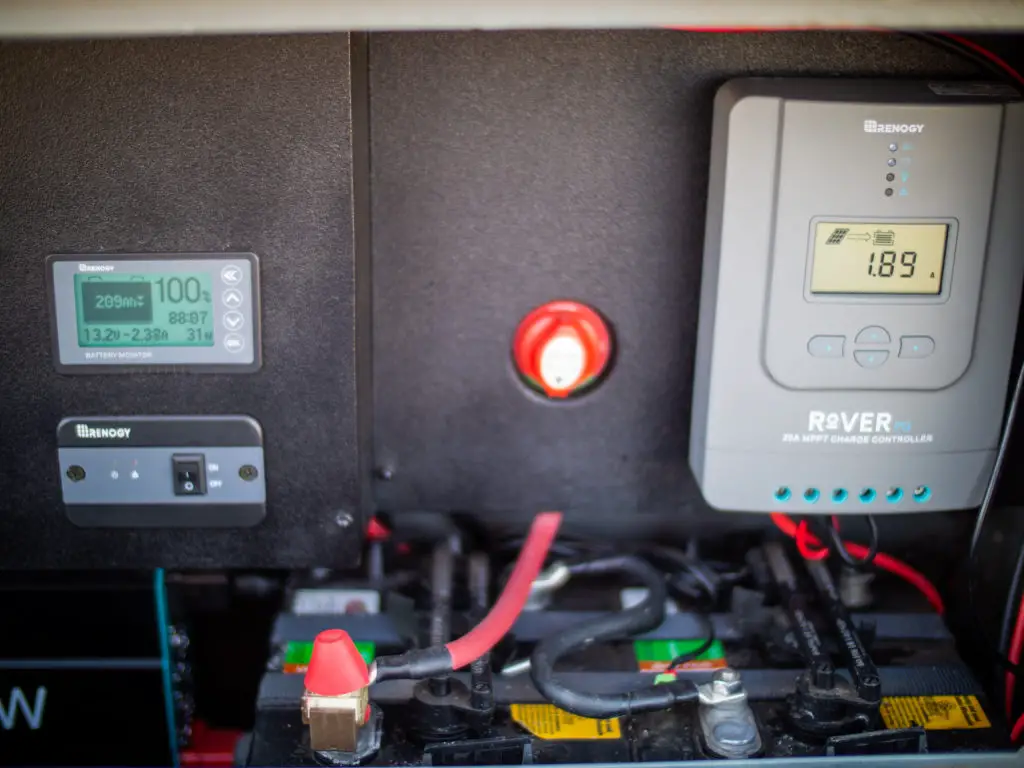
Update: We’ve now added the GOLABS i200 Portable Power Station, a 256Wh LiFePO4 power station with a 200W pure sine wave inverter to the trailer. It’s great for extending power to other campsite areas without the tether of an extension cord. We can keep it charged by the trailer’s electrical system – either by utilizing a solar panel or by plugging it into the trailer’s inverter to charge.
Lid
We custom crafted a steel and fiberglass lid to cover the trailer bed and to protect our camping gear from the elements. The lid is hinged on the front with gas strut lifts on the sides of the trailer to assist in opening and to keep it open. The bottom of the lid has 3 rows of led strip lighting that illuminates the bed area of the trailer and provides campground lighting when open. The lid is secured using 2 latch clamps that are lockable with padlocks. In the future, we’ll add a roof rack to the lid allowing for a planned shade awning, shower enclosure and rooftop tent.
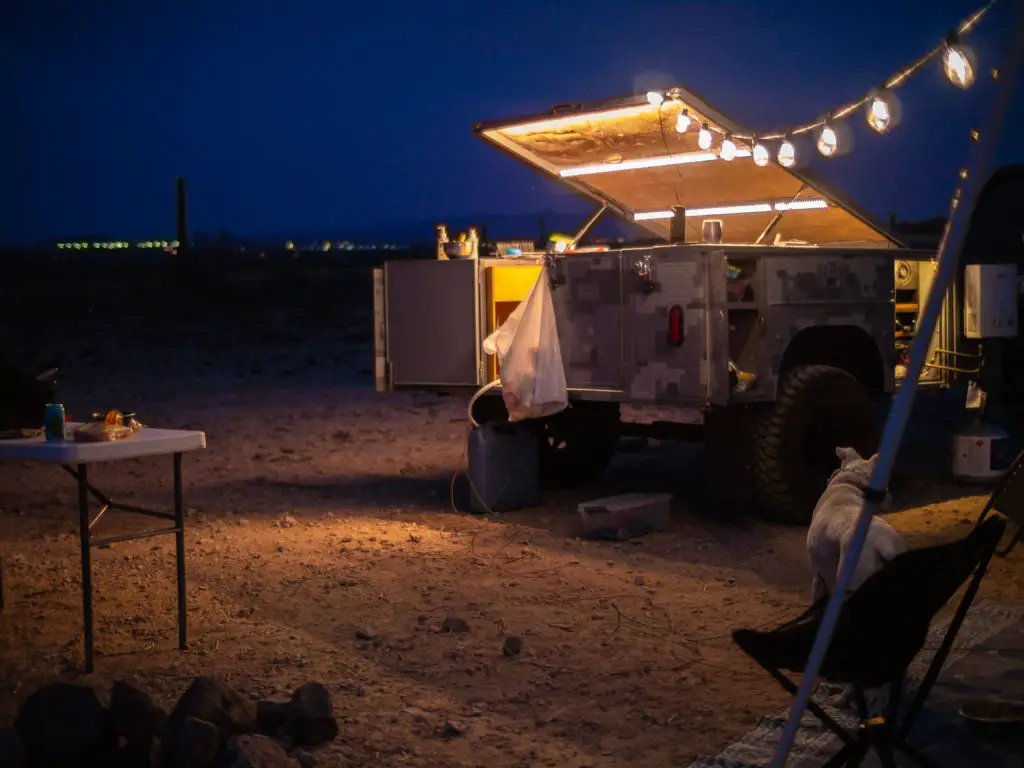
Refrigerator
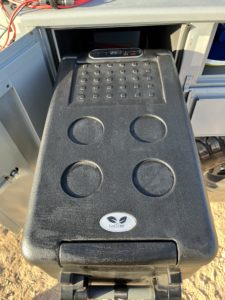 In our front left side compartment, we added a 53qt 12-volt refrigerator. We custom-built an aluminum tray for the fridge and mounted it in the compartment on heavy-duty locking drawer slides to both keep it in place when traveling and for easy access when needed.
In our front left side compartment, we added a 53qt 12-volt refrigerator. We custom-built an aluminum tray for the fridge and mounted it in the compartment on heavy-duty locking drawer slides to both keep it in place when traveling and for easy access when needed.
To connect it to the electrical system, we use the included 12v DC cigarette lighter charger which plugs into a bed-mounted 12V DC outlet which is switched at the electrical panel. With multiple compartments and ample space, this refrigerator has been a valuable addition to the trailer and allows us to cook using fresh ingredients when outdoors.
Water System
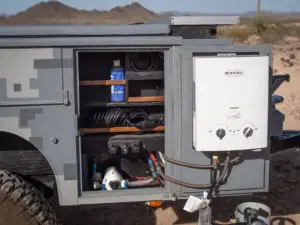 Our overland trailer’s water system is built around a 40-gallon water tank installed at the front of the trailer bed. In the right front side compartment, we installed a 12v 2.9 gallons per minute water pump that gives 50PSI of pressure to the system.
Our overland trailer’s water system is built around a 40-gallon water tank installed at the front of the trailer bed. In the right front side compartment, we installed a 12v 2.9 gallons per minute water pump that gives 50PSI of pressure to the system.
For hot water, we have a propane tankless water heater mounted to the back of the compartment door. The heater stows away neatly in the compartment when traveling or not in use. For showers and for general water needs, we installed a faucet with a quick disconnect fitting made for RV use. We also plumbed hot and cold water to the kitchen on the other side of the trailer using PEX tubing and fittings.
Kitchen
By far the most complicated part of the build so far, our overland kitchen includes a deep rectangular sink with folding faucet, hot and cold water, 3 storage drawers and a slide-out countertop for food prep.
Made of baltic birch plywood, the entire kitchen is protected with flat marine-grade varnish to protect against spills and the elements. The entire unit is on heavy-duty locking drawer slides. For the space of one side compartment, we have a well-equipped kitchen that meets all of our needs.
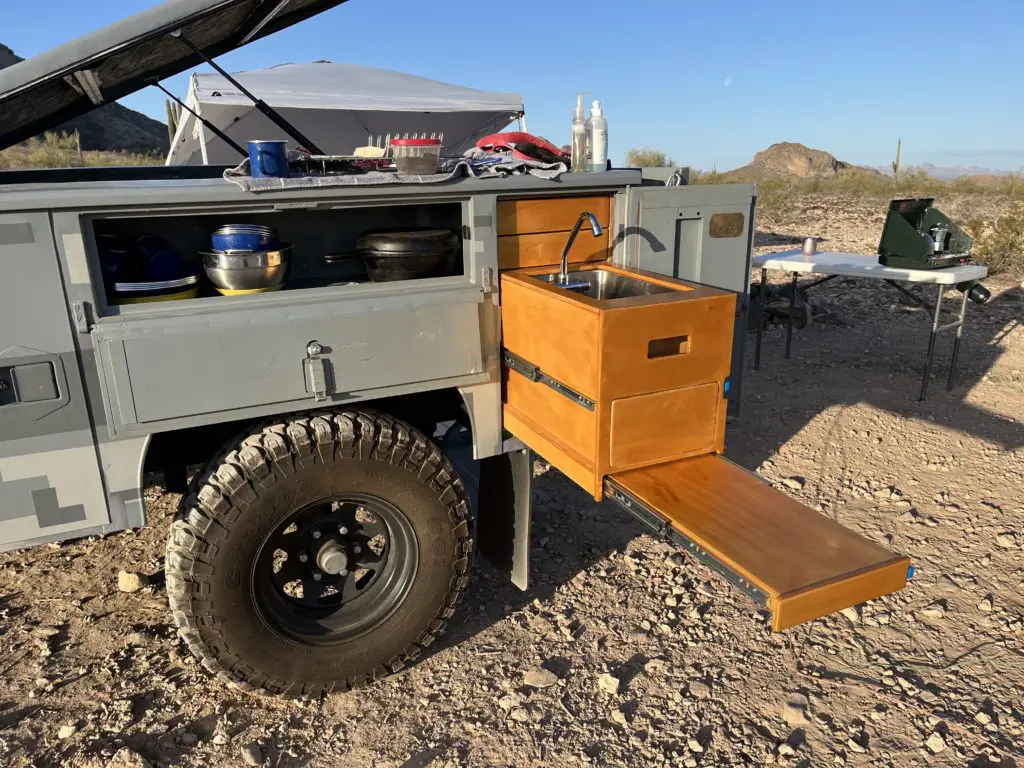
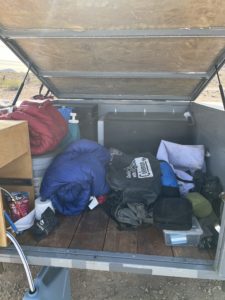
Storage
Even utilizing compartments for the refrigerator, water system, and kitchen, we still have 3 compartments for storage on the sides of the trailer. The front toolbox allows us to keep all of our tools and small miscellaneous gear secure. The main storage are is the area under the lid. This storage area is 67″ long x 60″ wide and 26″ tall giving us ample room for all of our gear. This space holds our Kodiak Canvas 10’x14′ Flex-Bow Tent, our Coleman Queen Airbed Cot, 3 awnings, 5 camping chairs, 2 extra water containers, multiple sleeping bags, mattress pads, and miscellaneous camping gear. Since this space is locked and protected from the elements, we can store all of our gear here when we’re not camping and it becomes usable workspace when we are.
Roofrack
Next up on the upgrade list is a roof rack to take the trailer vertical. We recently decided to purchase and modify this 800lb capacity truck bed roof rack rather than fabricate our own. We’ve received it, but have not yet had the chance to get it on the trailer. We will be completing the installation in the coming weeks. The added height of the roof rack will allow us to mount an Overland Vehicle System 270-degree batwing awning to provide shade and cover over the kitchen and refrigerator area. Also from Overland Vehicle Systems, we’ll install a shower side room to the roof rack on the opposite side of the trailer that is close to the water system. Also under consideration for the roof rack is a rooftop tent. If we end up going this route, it’s between the Smittybilt Overlander XL and the OVS Nomadic 3 Extended tents.
Conclusion
Our Overland Trailer has exactly what we need and is laid out exactly as we want – because we are building it custom for how we camp. The build process allows us to be deeply connected with our systems – if something goes wrong, we know how it’s built and can quickly identify the causes. We miss our Airstream Overlander for sure. It was a work of art that got our family out into the woods, but our overland trailer allows us to go further and on our terms.
As we continue to add and upgrade our overland trailer, we’ll post more in-depth details of what we chose, how we did it, and why. We’ll also be creating a series of more in-depth articles for each of our trailer systems to help those looking to do something similar. Stay tuned and check back often for more.
Gallery
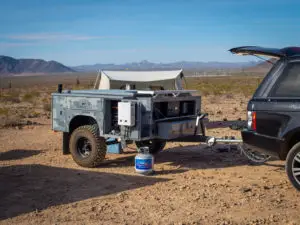
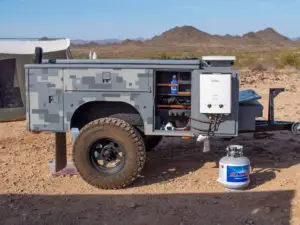
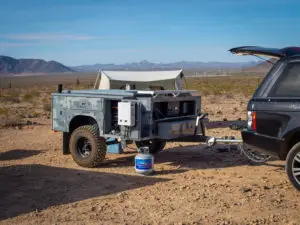
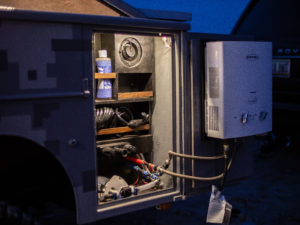
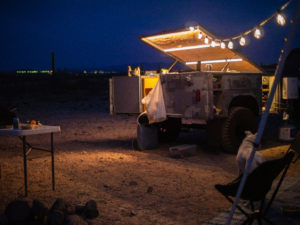
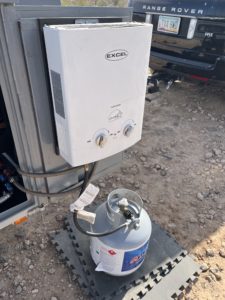
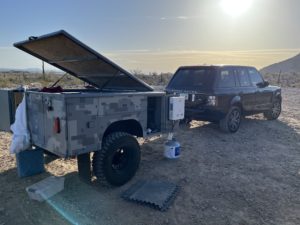
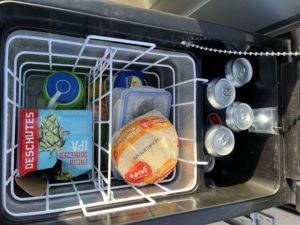
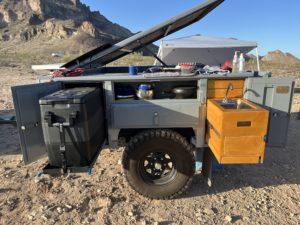
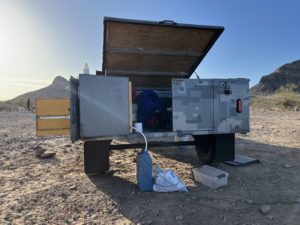
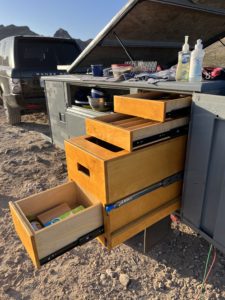
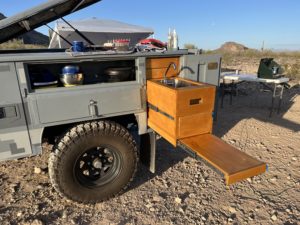
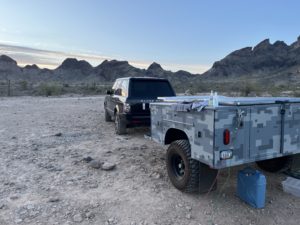
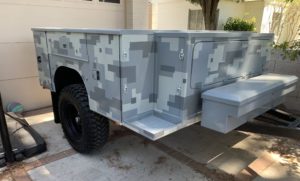
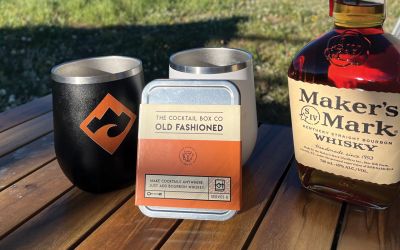
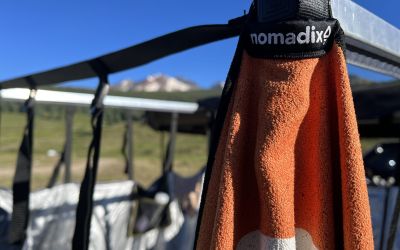
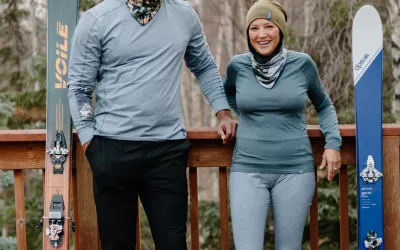
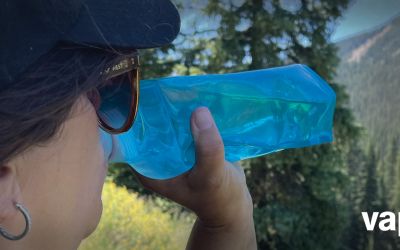
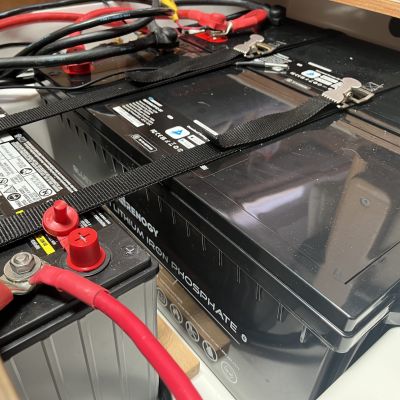
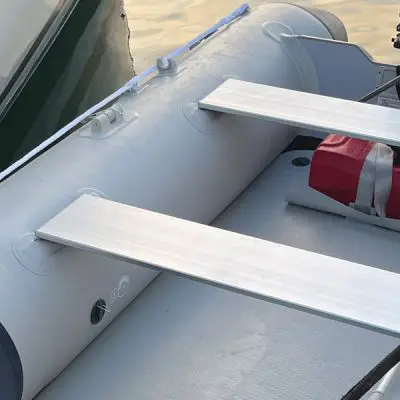
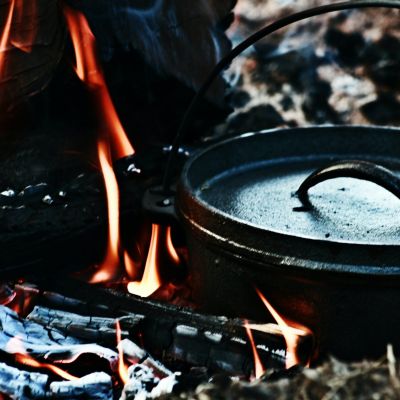
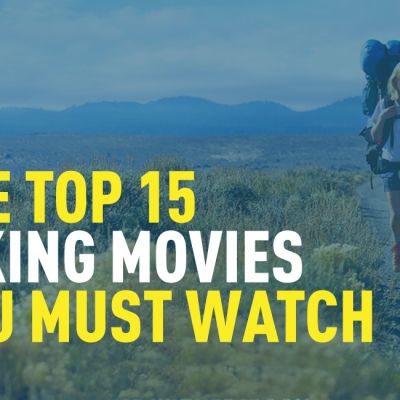
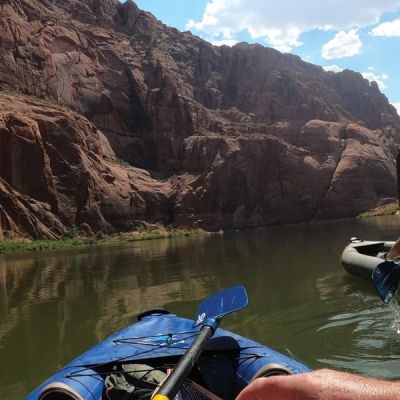
Leave a Reply